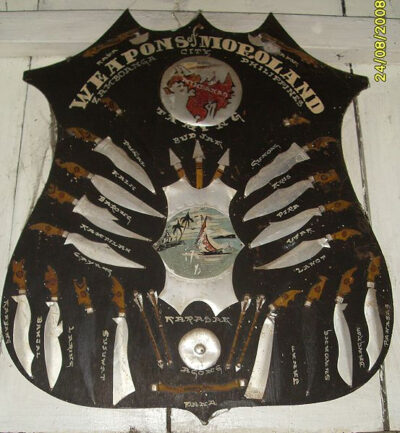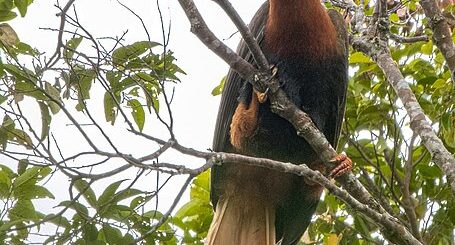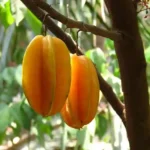Weapons of Moroland: A Legacy of Craftsmanship and Valor

Moroland, the historical region of the southern Philippines, is renowned for its rich cultural tapestry and warrior traditions. This area, predominantly inhabited by the Moro people, has a storied history marked by resistance against colonization and a deep reverence for martial skills. The weapons of Moroland are not only tools of combat but also embodiments of cultural identity and artistry.
Weapons of Moroland Historical Context
The Moro people’s history is shaped by centuries of conflict and resilience. Throughout this period, they developed a diverse array of weapons tailored for their unique combat styles. These weapons reflect their environmental conditions, social structures, and the influences of various cultures, including indigenous, Islamic, and colonial elements.
Featured Weapons of Moroland
Kris
The kris, a distinctively wavy dagger, is one of the most iconic weapons from Moroland. Renowned for its unique design and ceremonial significance, the kris is often used in rituals and is considered a status symbol. Its blade, which varies in length and complexity, is believed to possess spiritual powers.
Barong
The barong is a long, leaf-shaped sword that features a curved blade. Traditionally used by the Moro warriors, it is effective for slashing and thrusting. The barong’s craftsmanship often includes intricate designs on the hilt, showcasing the artistry of local blacksmiths.
Panabas
As previously discussed, the panabas is a heavy, curved sword used primarily in close combat. Its design allows for powerful slashing movements, making it effective in battles. The panabas symbolizes strength and resilience, often passed down through generations as a family heirloom. Read more.
Bolo
The bolo is a versatile cutting tool that also serves as a weapon. With a broad blade, it is commonly used for agriculture but has historically been adapted for combat. The bolo is emblematic of the practicality and resourcefulness of the Moro people.
Balasiong
It is a type of kalis but differs in that the double-edged blade isn’t straight or wavy but instead slightly convex. It also tapers sharply to the tip. The hilt is slightly curved, an element known as the kakatua.
Bangkung
The bangkung or bangkon is a slashing weapon, meant to deliver hacking-type blows. It is a short sword originating in the Sulu Archipelago of the Philippines.
Banjal
Banjal has an unusual concave shape on the blade’s top part, which is very similar to the bangkung in general profile. But it is smaller with a different pommel style. The blade is thick, weighted at the front for chopping attacks and had a single edge.
Gunong (Punyal)
The gunong serves both as a utility knife and as a thrusting weapon used for close quarter fighting—usually as a last defense.
Kampilan
The kampilan is a type of single-edged sword, traditionally used by various ethnic groups in the Philippine archipelago. It has a distinct profile, with the tapered blade being much broader and thinner at the point than at its base, sometimes with a protruding spikelet along the flat side of the tip.
Lahot
Lahot also called Gamong is a traditional Filipino ethnic Moro weapon. It is a long, thin one handed sword designed for slashing and thrusting. The length is about 61 to 71 cm. The design of the hilt is a typical hook to prevent slipping when wet.
Laring
The Laring has a lightweight design for slashing and thrusting. It has a two pronged tip like a blade catcher that looks like a snake’s tongue. The blade guard has a small round steel for firmer hold and mobility. The handle end has a unique hooked hilt grip design that serves as a counter weight for better handling and balance and to prevent the sword from slippage when pulling out when stuck in a target.
Gayang
Gayang is a double-edged sword about 61–122 cm in length with a typical hook hilt grip to prevent slipping. The sword was believed to be from Borneo and was a Philippines’ version of Mandau, a traditional sword of the Dayaks of Borneo.
Pirah
Pirah or pira is a type of Philippine bolo sword or knife characterized by a heavy blade and a wide tip. It superficially resembles a falchion but is much heavier. It is the traditional weapon favored by the Yakan people of Basilan Island.
Susuwat
Susuwat is a traditional Filipino ethnic Moro weapon. It is light and devastating used by the indigenous people of Mindanao. It is a single blade with a wide tipped and a triple prong designed for forward cutting. The sword is about 61–122 cm in length with a hooked grip to prevent slipping when wet.
Utak
It is a sword with a wide tip designed for cutting forward and is a one-handed weapon meant for chopping.
Craftsmanship and Artistry
The creation of these weapons is a labor of love, with blacksmiths employing traditional techniques passed down through generations. The forging process involves selecting high-quality steel and painstakingly shaping each blade to perfection. Decorative elements, including engravings and inlays, reflect the cultural significance of the weapon and the skill of the artisan.
Cultural Importance
Weapons in Moroland carry profound cultural meanings. They are often viewed as extensions of the warrior’s spirit, symbolizing honor, bravery, and loyalty. In many communities, these weapons are integrated into rituals and ceremonies, emphasizing their importance beyond mere functionality.
Modern Context
Today, the legacy of Moroland’s weapons lives on. They are celebrated in martial arts, cultural performances, and historical studies. Collectors and enthusiasts appreciate the craftsmanship and historical value of these weapons, ensuring that the stories and skills of the Moro people continue to be shared.
The weapons of Moroland are more than instruments of war; they are a testament to a rich cultural heritage and the enduring spirit of the Moro people. Each blade tells a story of resilience, artistry, and identity, serving as a bridge between the past and the present. As interest in Filipino culture and martial arts grows, the legacy of Moroland’s weapons remains vibrant, inspiring new generations to delve into their history and significance.
References:
https://www.europe-solidaire.org/spip.php?article3261
https://en.wikipedia.org/wiki/Weapons_of_Moroland
Image link. licensed under the Creative Commons Attribution 3.0 Unported license.










